Rather than my traditional stomping grounds in Florida, I wintered over in Indiana this year. Thankfully, it was a mild winter, considering I live in an RV. Other than some minor issues with frozen water lines in the belly of the RV, I stayed very comfortable inside my home on wheels.
Not far from where I have my RV parked is Brookville Lake, also in Indiana. Built in the 1970s for flood control, the lake has become a popular staging area for a large population of roughly 2000 Sandhill Cranes. A tall, leggy, chatty bird that has been flying around North America for at least two million years.
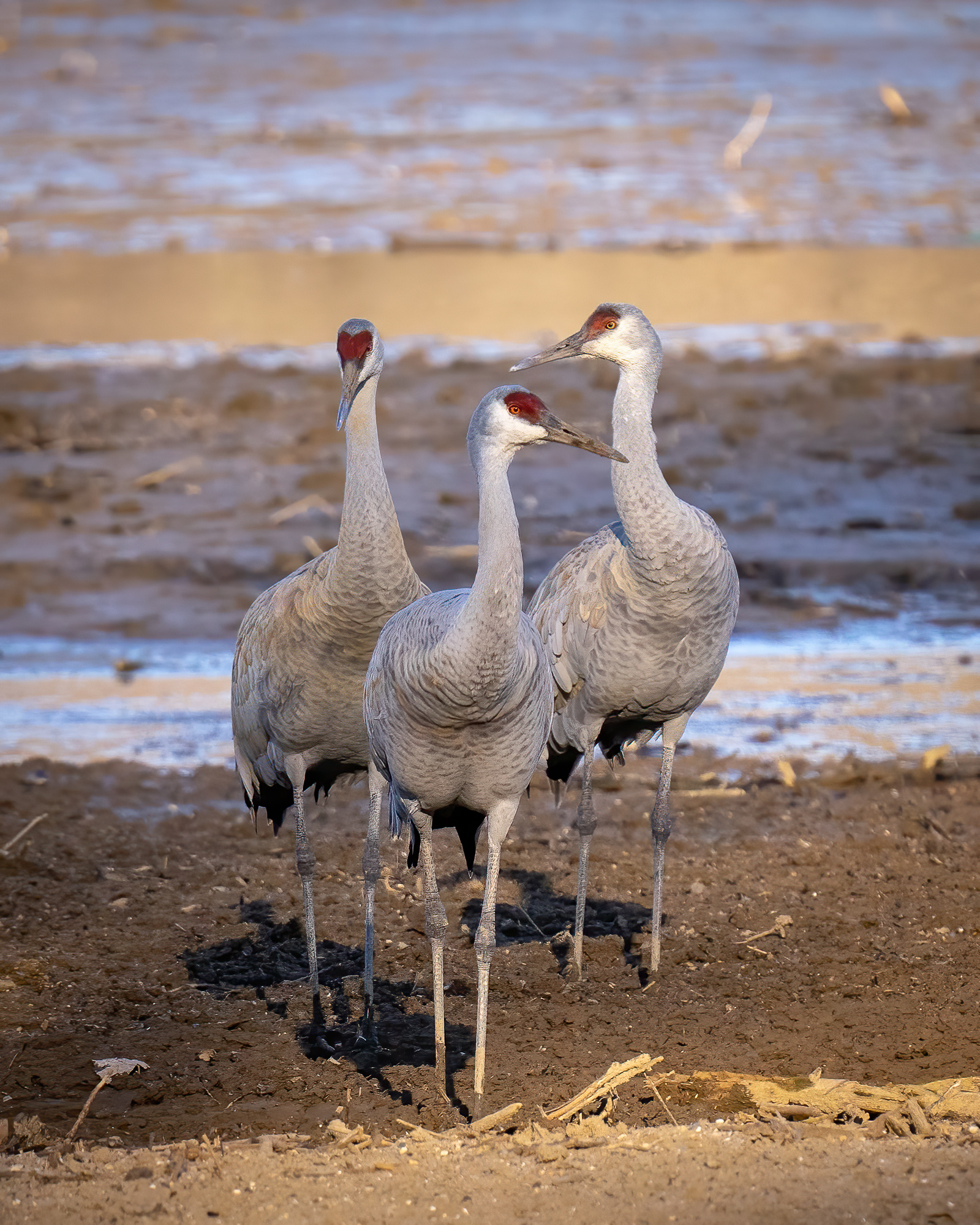
Shot at 600mm. Sony a7ii. 1/2000 at f/7.1, ISO 1250.
During winter months, the water level at Brookville Lake is lowered, turning the northern section of the lake into mudflats. The Sandhill Cranes migrating between Florida and their northern nesting grounds over the past 45 years have discovered the Brookville Lake mudflats and turned them into a migration staging ground. And in milder winters, their wintering grounds.
My passion for photographing Sandhill Cranes goes back 20-some years, to when I was living in Rockford, Illinois. While raking leaves one fall, I heard what I initially thought was a flock of Canadian Geese. Only the traditional goose honk had somewhat of a rattling, bugle sound mixed with it. Eventually, the flock came into view. Only a thousand feet up, it was obvious by size and shape that these were some kind of crane, and well over a hundred of them.
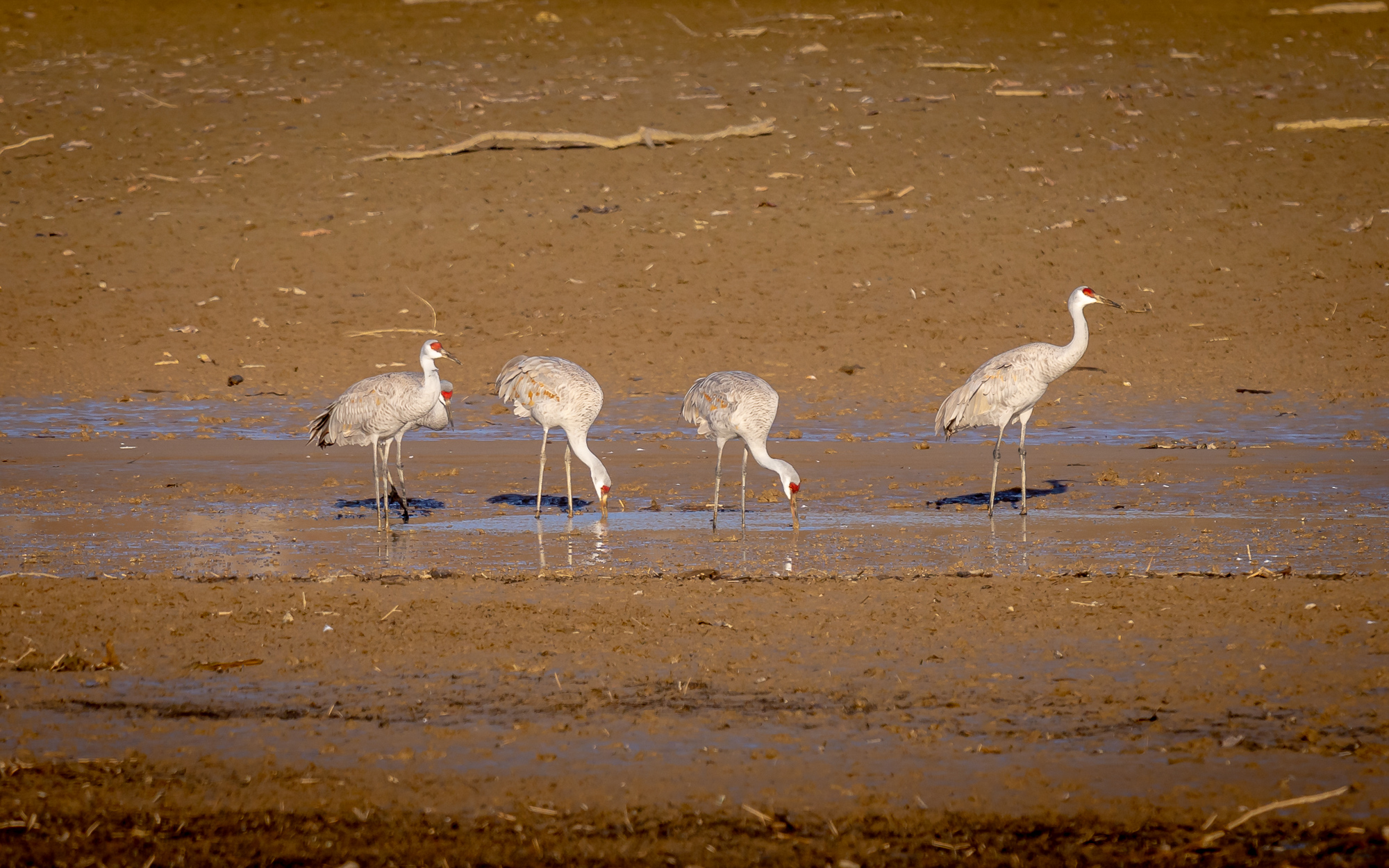
Then something bazaar happened. Directly over my house, the cranes started circling. I initially thought they were confused until I realized they were in thermal currents and ascending. I’ve never seen a flock of birds that large ride a thermal. With what little information I had, it was off to my computer for a little research. It didn’t take long to figure out they were Sandhill Cranes.
It was also during my research that I discovered Sandhill Cranes often hang out and even nest at the nearby Nygren Wetland in Rockton, Illinois. A place where I would end up spending ten years photographing not only Sandhill Cranes, but also White Pelicans, Bald Eagles, many songbirds, Painted Turtles, skunks, and frogs. It was at Nygren Wetland that I developed a deep appreciation for the Sandhill Crane.
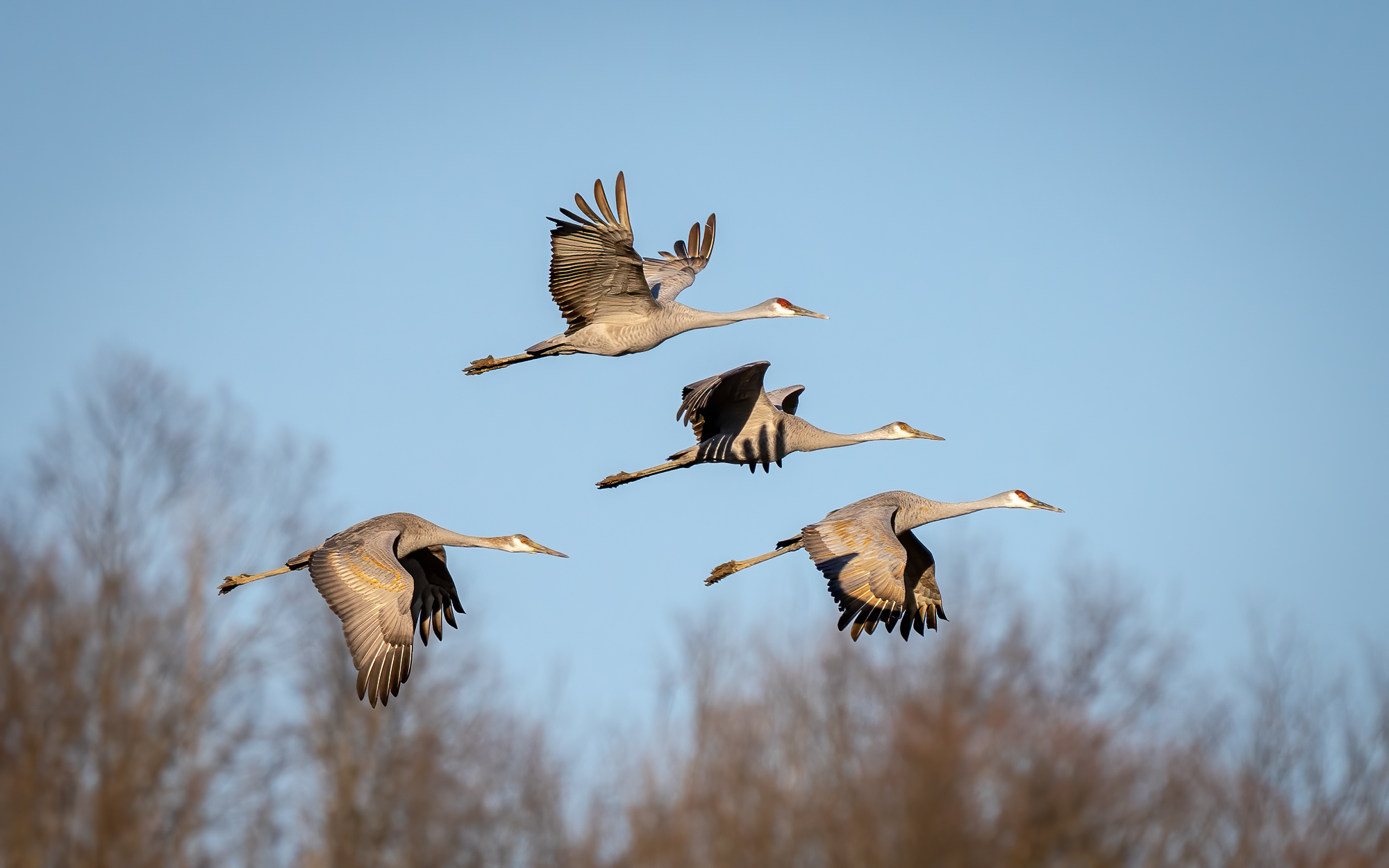
Shot at 600mm. Sony a7ii. 1/2000 at f/7.1, ISO 400.
I can literally watch and listen to Sandhill Cranes for hours on end. They are very social birds, communicating with their rattling-like calls, and by dancing, wings spread wide and hopping into the air. Their dancing, primarily a mating ritual, is also used socially.
At Brookville Lake, I like spending late afternoons photographing the Sandhill Cranes. Mid-afternoon, I typically find them resting, basking in the sun when available, and very quiet. Late afternoon, they start moving around a little more, calling out to others, and socializing by dancing. You’ll also find them driving their sharp beaks deep into the mud searching for tasty invertebrates to snack on.
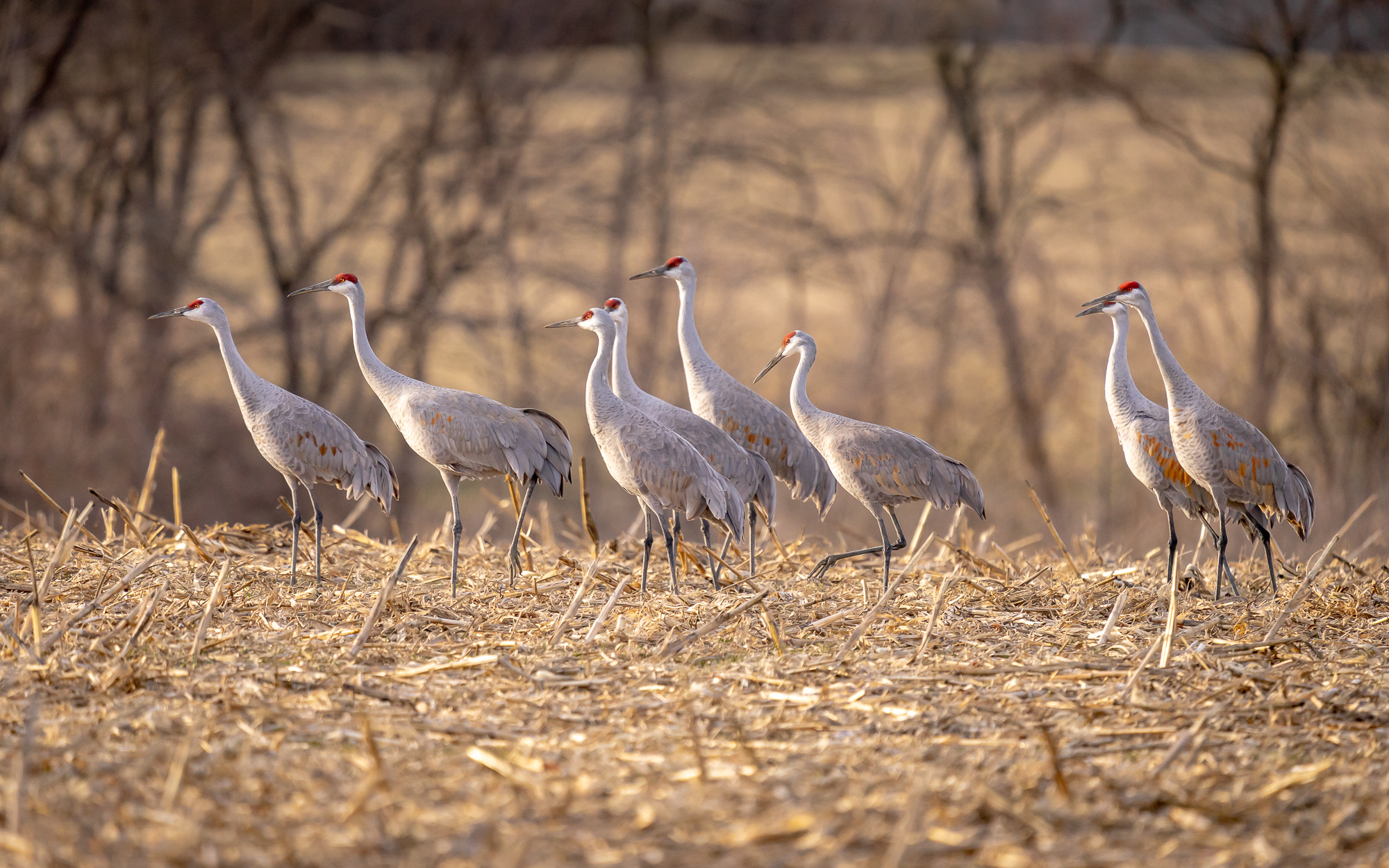
Shot at 600mm. Sony a7ii. 1/1000 at f/6.3, ISO 800.
With the sun just above the horizon, the Sandhills get restless. Most take flight in small family and social groups, heading out to the fields around Dunlapsville, Indiana to eat some grain and anything else tasty they find. Not long after sunset, the cranes leave the fields and return to the safety of the mudflats en masse.
Occasionally, I will see and hear a lone Sandhill Crane, circling high above the mudflats, for whatever reason, separated from its mate or family, calling out frantically in hopes of hearing a friendly voice amongst many. It’s a haunting, sad call. I’ve only encountered the call twice. Both times, a happy ending with the Sandhill hearing the correct return call and gliding in for a near vertical landing next to its companions.
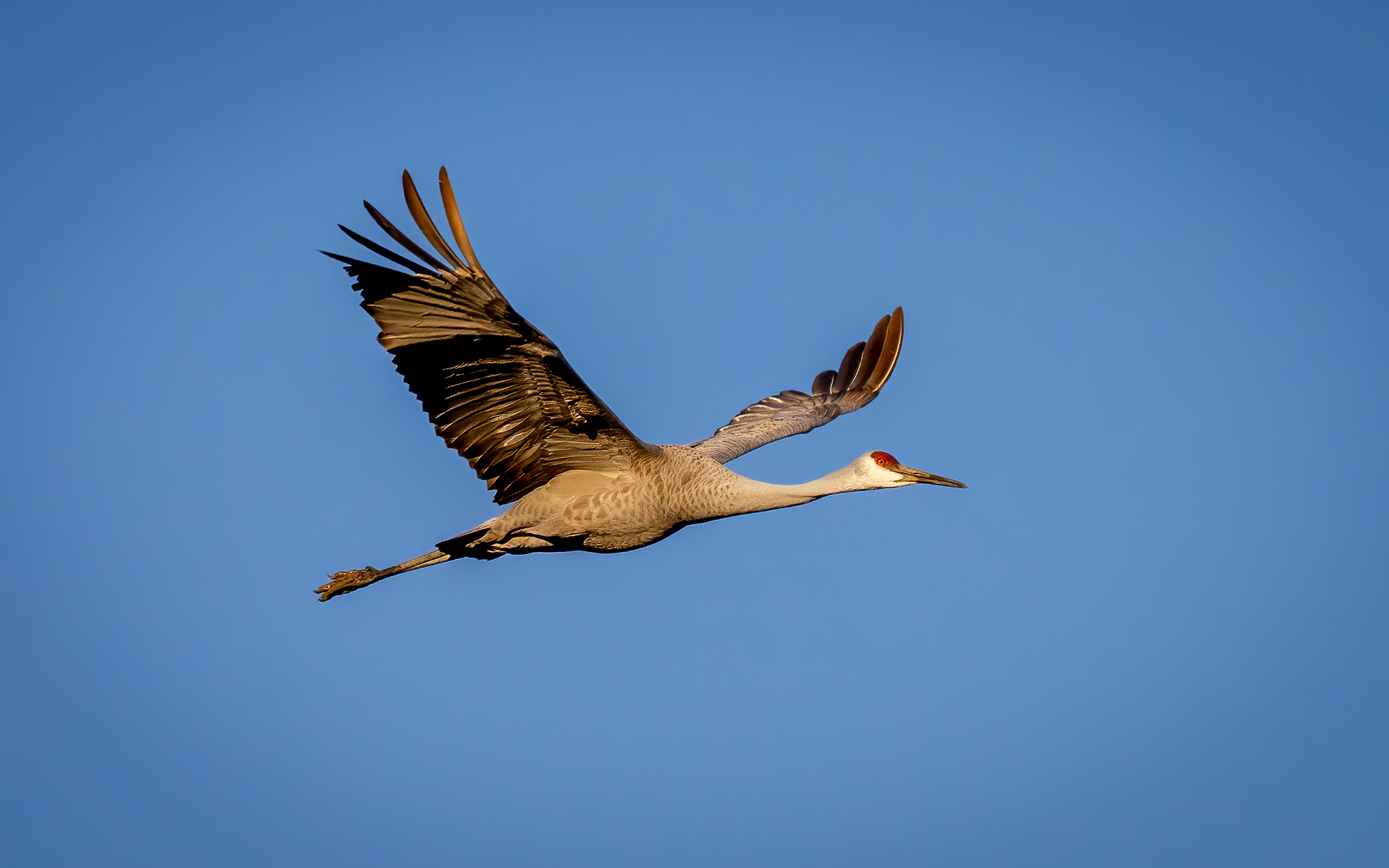
It’s the last official week of winter. Most of the Sandhill Cranes have already left the area, heading north to their nesting grounds. During my last visit to Brookville Lake, I found 50 cranes remaining. I’m hoping some of those will choose to nest in the Brookville Lake area, but based on what I’ve read, it’s doubtful. If not, then I will wait patiently for the Sandhill Crane’s return in the fall, with the hopes of making more photos.
If you would like to know more about the Sandhill Cranes of Brookville lake, the photo equipment or techniques I use, or just say hello, you can do that on my blog here. I’d love to hear from you. If you would like to see more of my photos of the Sandhill Cranes, follow this link to my photo galleries. https://wesgibsonphoto.com/sandhill-cranes

Very good pictures and the article of Dunlapsville. Our fields are full coming winter,early in the year . Interesting for sure.
Thanks Louanna. Yeah, hoping to find some good places to set up a blind this coming winter. Just hang out and wait for the sandhill cranes to come to me. Would like to get some closeups to add to my portfolio.
That would be great.
Greg…glad you enjoyed the article. All is fine with me. Putting together my list of adventures for the spring and summer months. Hope you and Patti are also doing well.
we are doing fine for Old people- I bought a 2019 Winibego about a year ago-24 foot – motor home – been enjoying that- we [ Rita -Myself and Kim ] went to Mexico Beach in Florida the last two weeks of Febuary and last summer we camped at several State Parks here in Indiana- enjoying life .
Very nice. The Mexico Beach area has been my stomping grounds for the past few years. Sopchoppy, Panacea, Carrabelle, Apalachicola, Port St. Joe, and the entire region. I love that part of Florida. I will eventually buy a house in that area. But for now, I just hold legal residence there.
I just read your article on Sandhill Cranes-very interesting- there is a family who lives in that area and they farm close to the lake and she comments on how noisey they are- there name is Larry and Lou-anna Booth. Good to hear from you Wes.
Nice to hear from you, Dave. Am glad you enjoyed the article. I may have to look up your friends. All winter, I wanted to set up a blind in the cornfields around Dunlapsville to get some close-up photos of the Sandhills. But didn’t want to get a backside full of buckshot from a farmer. Been asking around trying to find someone who knew a farmer around Dunlapsville.
The Sandhills are noisy birds. But I love listening to them. So much so, I’ve got my eye on a house in Dunlapsville right now. Walking distance to the lake.
Hope you and Rita are doing well.
Interesting article I enjoyed reading. Hope you’re doing well and look forward to reading more of your articles